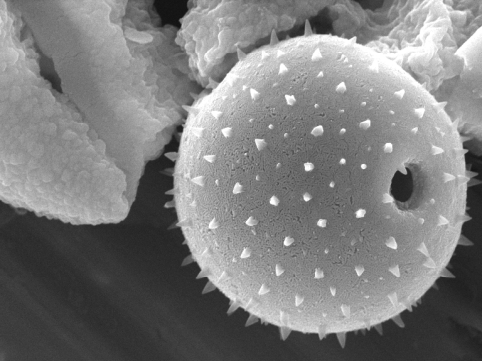Instrumental methods
The instrumental methods units aim to acquaint you with the principles of modern analytical methods, the structure of the used equipment, and their practical application. The unit is divided into two parts – the first is brought up in the first semester, and the second – in the second semester of the third year. With the help of this unit, you will acquire skills for determining the content of ions in water samples, plants, salt solutions, and more. You will gain knowledge about the use of chromatographic methods for purifying and separating the components of a mixture (e.g., a mixture of aromatic hydrocarbons, separating the components of air, proteins, and vitamins). Did you know that chromatographic methods are used in criminology to identify the perpetrator of a crime?
The second part of the unit introduces methods for analyzing organic substances. These methods are useful in determining substance concentration in a given sample using their absorption, determining the chemical structure of organic compounds (medications) using infrared spectroscopy and NMR, and predicting the magnetic properties of coordination compounds and organic molecules by calculating their magnetic moment.
Units from this Section
Instrumental Methods in Chemistry

The instrumental methods units aim to acquaint you with the principles of modern analytical methods, the structure of the used equipment, and their practical application. The unit is divided into two parts – the first is brought up in the first semester, and the second – in the second semester of the third year. With the help of this unit, you will acquire skills for determining the content of ions in water samples, plants, salt solutions, and more. You will gain knowledge about the use of chromatographic methods for purifying and separating the components of a mixture (e.g., a mixture of aromatic hydrocarbons, separating the components of air, proteins, and vitamins). Did you know that chromatographic methods are used in criminology to identify the perpetrator of a crime?
The second part of the unit introduces methods for analyzing organic substances. These methods are useful in determining substance concentration in a given sample using their absorption, determining the chemical structure of organic compounds (medications) using infrared spectroscopy and NMR, and predicting the magnetic properties of coordination compounds and organic molecules by calculating their magnetic moment.
The second part of the unit introduces methods for analyzing organic substances. These methods are useful in determining substance concentration in a given sample using their absorption, determining the chemical structure of organic compounds (medications) using infrared spectroscopy and NMR, and predicting the magnetic properties of coordination compounds and organic molecules by calculating their magnetic moment.
Instrumental Methods in Material Science

This unit introduces methods for characterization of metals, metal alloys and other solid materials. In the first part of the unit, crystal symmetry is studied in detail. This knowledge is useful when one is interpreting results from X-ray structural analysis – a commonly used method for characterizing a material’s structure (which is important for its final properties). You will learn about the crystals with the most perfect symmetry found in nature. You will challenge your spatial orientation while trying to determine the symmetry elements of NaCl (or table salt). In the second part of the course, you will get acquainted with modern microscopy methods — electron microscopy (scanning and transmission), atomic force microscopy, and others. You will study thermal analysis methods of solid materials, allowing you to observe phase transitions in the studied systems. By the end of the course, you will have learned how to characterize materials based on their mechanical properties. You will understand the difference between plastic, brittle, deformable, and durable materials. With the knowledge acquired in the course, you will comprehend how the properties of metals and their alloys have influenced the development of humanity, and how the eras of antiquity are named after the metals used to make tools at that time.
